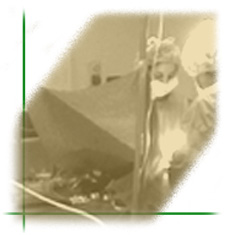The body response to surgical stress is a physiological response which can also be found in some serious pathological conditions, like trauma and burns: the aim of this response is to keep at hand the necessary substrates to encourage tissue healing and adaptation to traumatic insult, be it surgical or incidental.
Surgery determines a remarkable enhancement of blood circulating catecholamines. The activation of the hypothalamic – pituitary system produces an increase in the levels of ADH (Antidiuretic Hormone), GH (Growth Hormone) and ACTH (Adrenocorticotropic Hormone). ACTH release and the subsequent activation of the renin-angiotensin system leads to aldosterone release and finally to increased blood levels of glucocorticoids. The release of catecholamines may initially induce tachycardia, hypertension, vasoconstriction and a decrease in circulating blood volume. Retention of fluids (induced by ADH) and sodium (induced by aldosterone) causes an increase in interstitial volume, a reduction in diuresis and an increase in potassium excretion. The resulting accumulation of fluids in the injured tissues constitutes the so-called ‘third space losses’. Shortly after this, the catabolic stage follows, mediated by glucagon, GH, and corticosteroids, which persists well after the first water/electrolyte imbalance. The loss of retained fluids and the catabolism of lipids and proteins bring to a reduction of the body mass. Glycaemia often raises, sometimes so dramatically that insulin therapy is required. However, carbohydrates body reserves, in the form of glycogen, are only sufficient for the first 24 hours; after that, organisms draw energy from lipid and lean mass catabolism.  The exploitation of these “extreme” sources of energy depends on the gravity of the insult, and on the administration or not of exogenous carbohydrates. The high plasmatic insulin plasma levels which characterize stress response to surgery inhibit lipolysis, despite the presence of insulin-resistance, so inducing an increase in protein catabolism: this happens as an effort to maintain the necessary available energy for cellular metabolism, and its consequence is again a loss of body mass. Body mass reduction (a decrease in the number of cells) goes along with a raise of extracellular volume (fluid retention) giving as a consequence the fact that weight loss does not reflect the seriousness of the process which is going on. An early nutritional support for patients undergoing invasive surgery or affected by serious trauma is an efficient therapeutic aid which can limit the processes described above, while fluid therapy should be carefully calculated (type of fluid and total administered volume), in order not to make existing electrolytes imbalance even worse.
The exploitation of these “extreme” sources of energy depends on the gravity of the insult, and on the administration or not of exogenous carbohydrates. The high plasmatic insulin plasma levels which characterize stress response to surgery inhibit lipolysis, despite the presence of insulin-resistance, so inducing an increase in protein catabolism: this happens as an effort to maintain the necessary available energy for cellular metabolism, and its consequence is again a loss of body mass. Body mass reduction (a decrease in the number of cells) goes along with a raise of extracellular volume (fluid retention) giving as a consequence the fact that weight loss does not reflect the seriousness of the process which is going on. An early nutritional support for patients undergoing invasive surgery or affected by serious trauma is an efficient therapeutic aid which can limit the processes described above, while fluid therapy should be carefully calculated (type of fluid and total administered volume), in order not to make existing electrolytes imbalance even worse.
Processes involved in surgical stress response receive an initial humoral and nervous activation (pain and sympathetic fibres), followed by an amplification mediated by tissue damage (cytokines). These processes are not influenced by the depth of anaesthesia, since most injectable and inhalational anaesthetics have poor or null effects under this respect if administered at ‘clinical doses’. Conversely, they seem to be mitigated by the use of high doses of opioids. A blockade of nervous response at peripheral level through the use of local anaesthetics has proved its effectiveness in reducing intensity and duration of stress response, though it does not thoroughly eliminate this reaction, having no effect on the local inflammatory response. For these reasons, the administration of drugs which inhibit or reduce this local response in association with anaesthetics may be a very useful strategy.
[to be continued ...]















